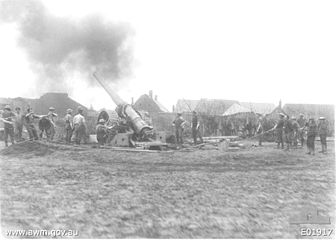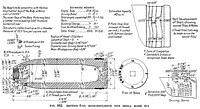
The Ordnance BL 60-pounder was a British 5 inch (127 mm) heavy field gun designed in 1903–05 to provide a new capability that had been partially met by the interim QF 4.7 inch Gun. It was designed for both horse draft and mechanical traction and served throughout the First World War in the main theatres. It remained in service with British and Commonwealth forces in the inter-war period and in frontline service with British and South African batteries until 1942 being superseded by the BL 4.5 inch Medium Gun.
This article explains terms used for the British Armed Forces' ordnance (weapons) and ammunition. The terms may have different meanings depending on its usage in another country's military.
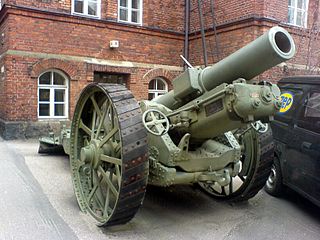
The BL 8-inch howitzer Marks VI, VII and VIII were a series of British artillery siege howitzers on mobile carriages of a new design introduced in World War I. They were designed by Vickers in Britain and produced by all four British artillery manufacturers but mainly by Armstrong and one American company. They were the equivalents of the German 21 cm Morser 16 and in British service were used similarly to the BL 9.2-inch howitzer but were quicker to manufacture and more mobile. They delivered a 200 lb (91 kg) shell to 12,300 yd. They had limited service in the British Army in World War II before being converted to the new 7.2 in (180 mm) calibre. They also equipped a small number of Australian and Canadian batteries in World War I and by the US Army in that war. They were used in small numbers by other European armies.

The Ordnance BL 6 inch 26cwt howitzer was a British howitzer used during World War I and World War II. The qualifier "26cwt" refers to the weight of the barrel and breech together which weighed 26 long hundredweight (1.3 t).
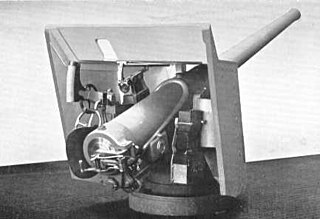
The QF 4.7-inch Gun Mks I, II, III, and IV were a family of British quick-firing 4.724-inch (120 mm) naval and coast defence guns of the late 1880s and 1890s that served with the navies of various countries. They were also mounted on various wheeled carriages to provide the British Army with a long range gun. They all had a barrel of 40 calibres length.

The Ordnance BLC 15-pounder gun was a modernised version of the obsolete BL 15-pounder 7 cwt gun, incorporating a recoil and recuperator mechanism above the barrel and a modified quicker-opening breech. It was developed to provide Territorial Force artillery brigades with a reasonably modern field gun without incurring the expense of equipping them with the newer 18-pounder. It is the gun that writers usually mean by "15-pounder gun" in World War I, but can be confused with the earlier Ordnance QF 15-pounder Ehrhardt or Ordnance BL 15-pounder, both of which fired the same shell.
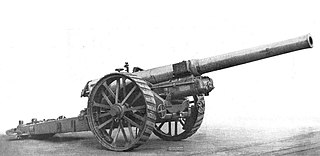
The British BL 6-inch gun Mk XIX was introduced in 1916 as a lighter and longer-range field gun replacement for the obsolescent BL 6-inch gun Mk VII.

The QF 6-inch 40 calibre naval gun (Quick-Firing) was used by many United Kingdom-built warships around the end of the 19th century and the start of the 20th century.
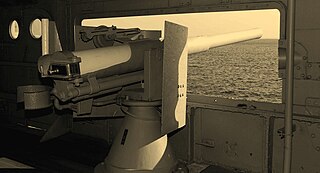
The QF 12-pounder 12-cwt gun (Quick-Firing) was a common, versatile 3-inch (76.2 mm) calibre naval gun introduced in 1894 and used until the middle of the 20th century. It was produced by Armstrong Whitworth, Elswick and used on Royal Navy warships, exported to allied countries, and used for land service. In British service "12-pounder" was the rounded value of the projectile weight, and "12 cwt (hundredweight)" was the weight of the barrel and breech, to differentiate it from other "12-pounder" guns.

The QF 12 pounder 18 cwt gun (Quick-Firing) was a 3-inch high-velocity naval gun used to equip larger British warships such as battleships for defence against torpedo boats. 18 cwt referred to the weight of gun and breech, to differentiate the gun from others that also fired the "12 pound" shell.
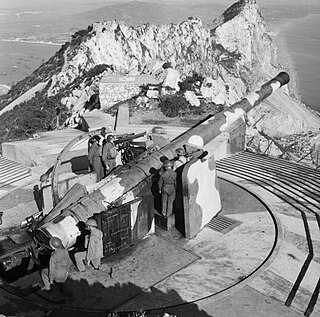
The BL 9.2-inch Mk IX and Mk X guns were British breech loading 9.2-inch (234 mm) guns of 46.7 calibre, in service from 1899 to the 1950s as naval and coast defence guns. They had possibly the longest, most varied and successful service history of any British heavy ordnance.
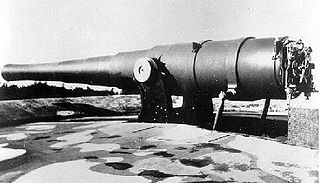
The BL 9.2-inch Mk I–VII guns were a family of early British heavy breechloading naval and coast defence guns in service from 1881 to the end of World War I. They were originally designed to use the old gunpowder propellants.

The BL 6-inch gun Marks II, III, IV and VI were the second and subsequent generations of British 6-inch rifled breechloading naval guns, designed by the Royal Gun Factory in the 1880s following the first 6-inch breechloader, the relatively unsuccessful BL 6-inch 80-pounder gun designed by Elswick Ordnance. They were originally designed to use the old gunpowder propellants but from the mid-1890s onwards were adapted to use the new cordite propellant. They were superseded on new warships by the QF 6-inch gun from 1891.
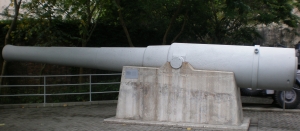
The BL 10 inch guns Mks I, II, III, IV were British rifled breechloading 32-calibre naval and coast defence guns in service from 1885.

The QF 4-inch gun Mks I, II, III were early British QF (quick-firing) naval guns originating in 1895. They all had barrels of 40 calibres length.

The BL 8 inch guns Mark I to Mark VII were the first generations of British rifled breechloaders of medium-heavy calibre. They were initially designed for gunpowder propellants and were of both 25.5 and 30 calibres lengths.

The BL 4-inch gun Mk VII was a British high-velocity naval gun introduced in 1908 as an anti-torpedo boat gun in large ships, and in the main armament of smaller ships. Of the 600 produced, 482 were still available in 1939 for use as coastal artillery and as a defensive weapon on Defensively Equipped Merchant Ships (DEMS) during the Second World War.

The BL 5-inch guns Mk I – Mk V were early British 5-inch rifled breechloading naval guns after it switched from rifled muzzle-loaders in the late 1870s. They were originally designed to use the old gunpowder propellants. The 5-inch calibre was soon discontinued in favour of QF 4.7-inch.

The RML 12.5-inch guns were large rifled muzzle-loading guns designed for British battleships and were also employed for coast defence.
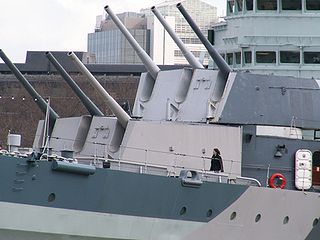
The 50 calibre BL 6 inch gun Mark XXIII was the main battery gun used on the Royal Navy and British Commonwealth's conventional (non-anti-aircraft) light cruisers built from 1930 through the Second World War, and passed into service with several other navies when ships were disposed of after the end of the War.




